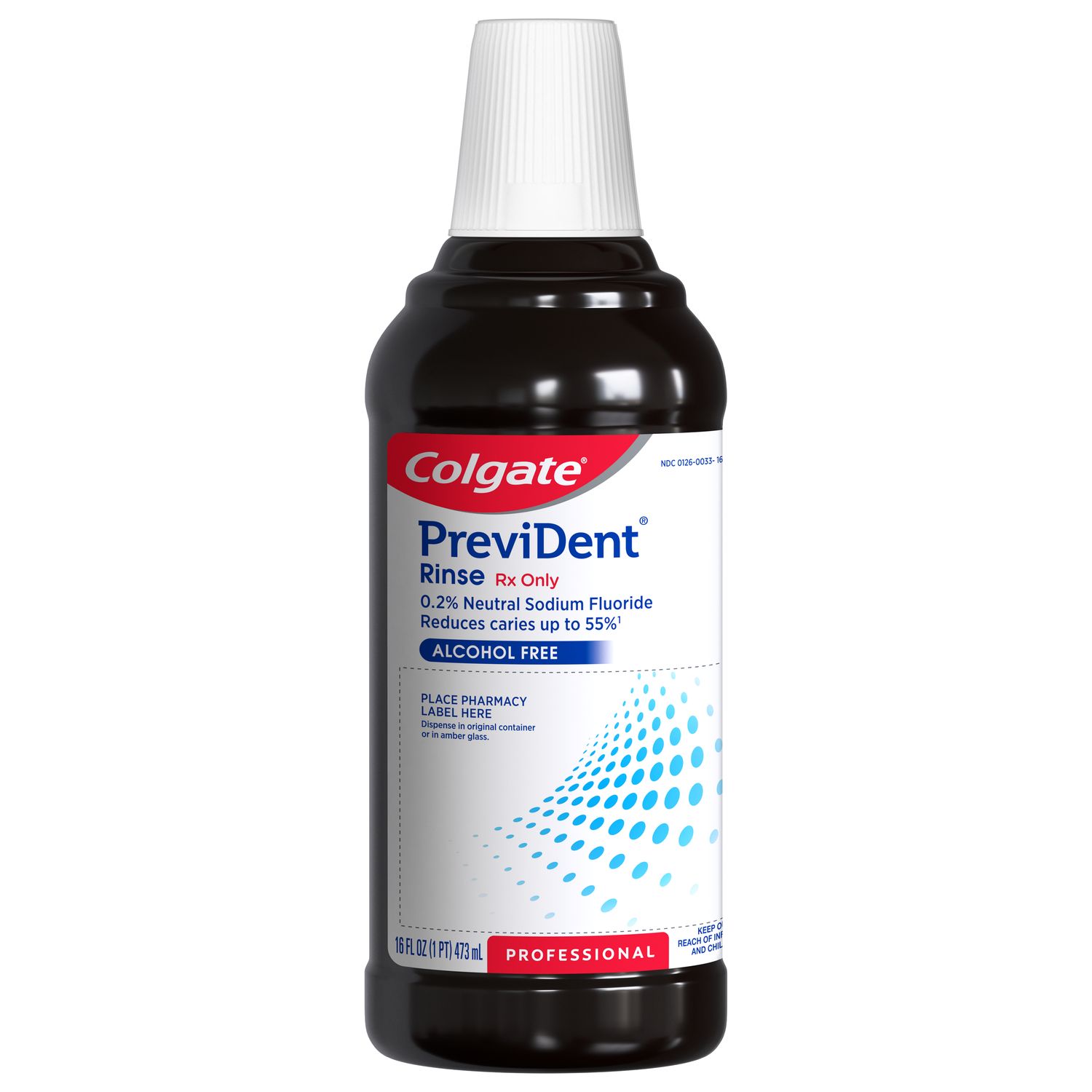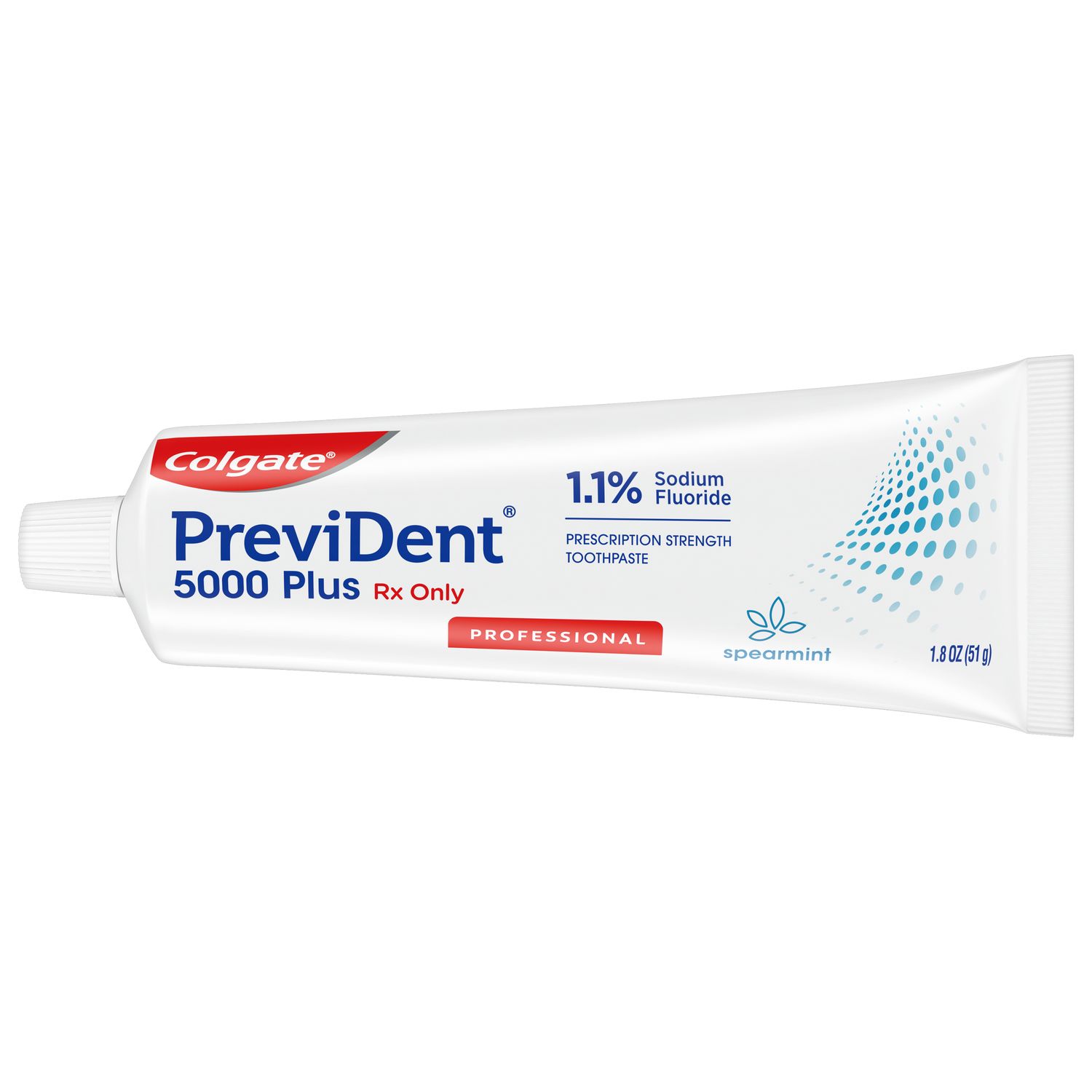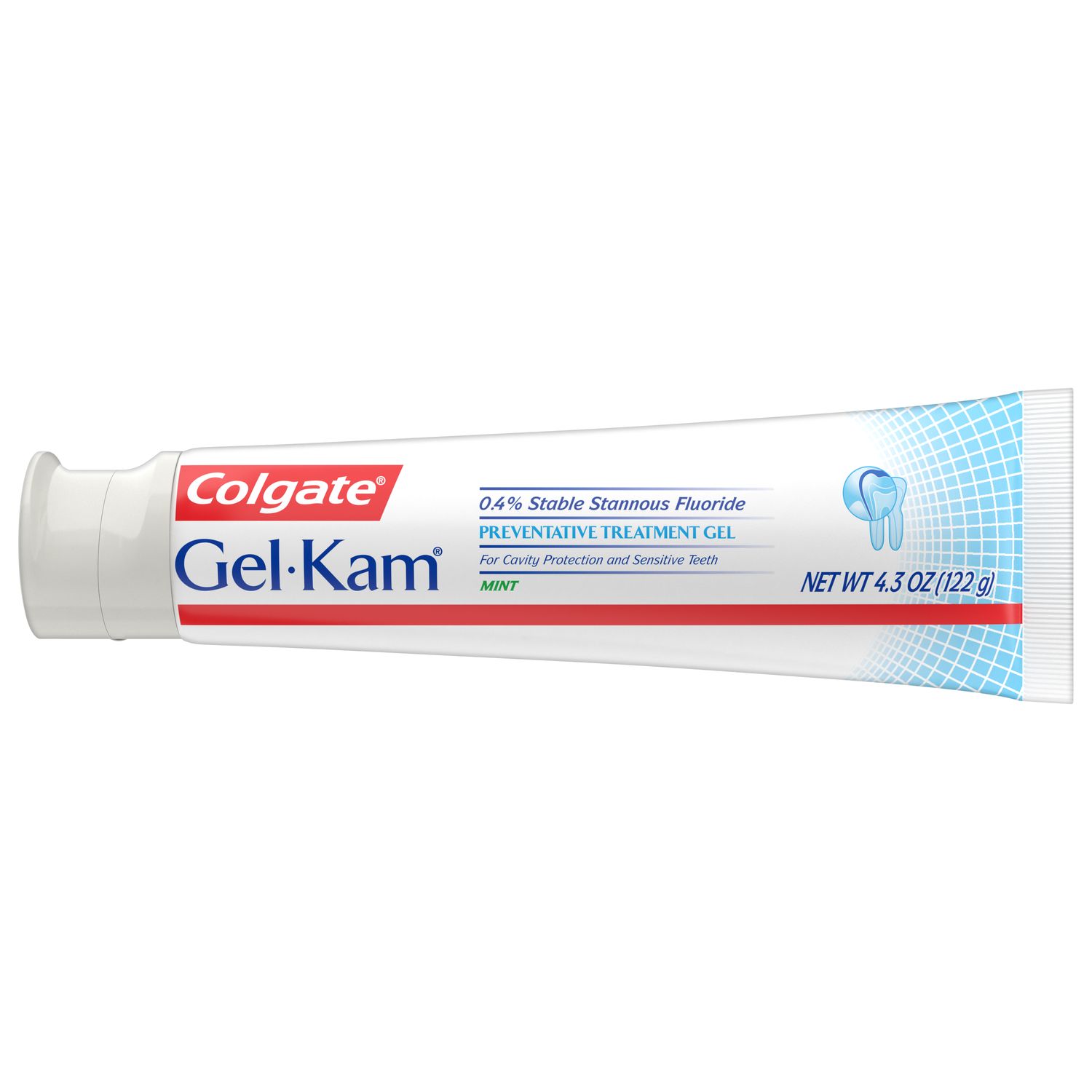Prescription Products
11 results

Colgate® PreviDent® 5000 ppm Sensitive (1.1% Sodium Fluoride, 5% Potassium Nitrate), Mild Mint
Colgate® PreviDent® 5000 Sensitive Protection is a low abrasion, prescription strength toothpaste for sensitive teeth and Prevents Cavities. Ask your dentist!

Colgate® PreviDent® Gel (1.1% Sodium Fluoride), Very Berry
Colgate® PreviDent® Gel is an at-home, Rx Only brush-on gel treatment for those that require extra-strength fluoride protection. Contact your your dentist today!

Colgate® PreviDent® Rinse (0.2% Neutral Sodium Fluoride), Mint
Colgate® PreviDent® Oral Rinse is prescription-strength, with extra fluoride to help decrease cavities for people who have trouble brushing.

Colgate® PreviDent® Varnish (5% Sodium Fluoride), Raspberry
Colgate® PreviDent® Varnish is an in-office treatment for sensitive teeth. Contact your dentist today!

Colgate® PreviDent® 5000 ppm Enamel Protect (1.1% Sodium Fluoride, 5% Potassium Nitrate), Mint
Colgate® PreviDent® 5000 Enamel Protection is a high fluoride toothpaste formulated to strengthen teeth & enamel for a healthier smile. Contact your your dentist today!

Colgate® PreviDent® 5000 ppm Kids (1.1% Sodium Fluoride)
Help pepare children's smiles for the future. Colgate® PreviDent® 5000 Kids Prescription Toothpaste is a prescription strength fluoride toothpaste trusted by dental professionals. Contact your dentist today!

Colgate® PreviDent® 5000 ppm Booster Plus (1.1% Sodium Fluoride), Fruitastic
Colgate® PreviDent® 5000 Booster Plus is a high fluoride prescription strength toothpaste for unsurpassed remineralization. Contact your your dentist today!

Colgate® PreviDent® 5000 ppm Dry Mouth (1.1% Sodium Fluoride)
Colgate® PreviDent® 5000 Dry Mouth is a prescription strength toothpaste to fight dry mouth and remineralize teeth. Contact your your dentist today!

Colgate® PreviDent® 5000 ppm Kids (1.1% Sodium Fluoride)
Help pepare children's smiles for the future. Colgate® PreviDent® 5000 Kids Prescription Toothpaste is a prescription strength fluoride toothpaste trusted by dental professionals. Contact your dentist today!

Colgate® PreviDent® 5000 Plus (1.1% Sodium Fluoride), Spearmint
Colgate® PreviDent® 5000 Plus Prescription Toothpaste delivers 4x the fluoride than over-the-counter toothpastes & rinses. Contact your your dentist today!

Colgate® Gel-Kam® Preventive Treatment Gel, Mint
Colgate® Gel-Kam Preventative Treatment Gel prevents cavities and treats sensitive teeth with a clinically proven fluoride formula. Try it today!





